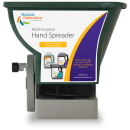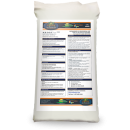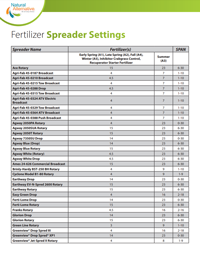Inhibitor 18-0-6 Pre-emergent Weed Control
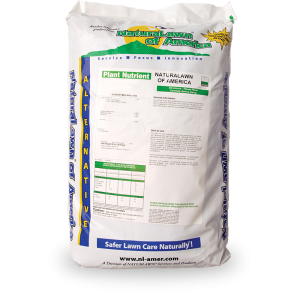
Fertilizes up to 6,000 sq.ft.
Pre-emergent Weed Control for Your Lawn
Weeds can distract from your lawn’s appeal and deprive the grass of nutrients and water needed to thrive. That’s why Natural Alternative® offers pre-emergent crabgrass control before crabgrass become a nuisance. Natural Alternative® Inhibitor 18-0-6 Pre-emergent Weed Control can be spread directly onto established turf to help prevent crabgrass.
We've got your lawn covered
Our Inhibitor can be used on a variety of grass types, including all Natural Alternative® seed selections. Inhibitor's pre-emergent lawn treatment also includes a mix of nitrogen and potassium to help your lawn thrive while preventing crabgrass emergence. Our Inhibitor offers control against annual grass weeds like crabgrass, goosegrass, and foxtails. It’s time to enjoy your outdoor space without being burdened by invaders sprouting up in your lawn.
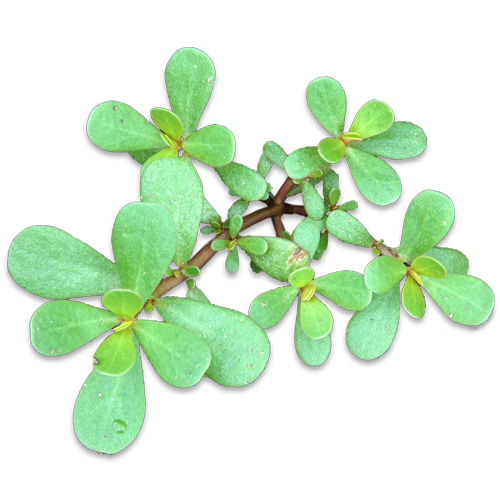
Product Information
Application Instructions
When to Apply Pre-Emergent Fertilizer
Successful pre-emergence control of the annual grass weeds listed on this label requires proper timing of application. Apply this pre-emergent fertilizer 1 to 2 weeks prior to the germination of annual grass weeds. If application timing does not coincide with the normal germination period of any of the annual grass weeds listed on this label, weed control results may be erratic or poor. Weed seeds typically begin to germinate when soil temperatures reach 55 degrees Fahrenheit (3 to 5 days of 60-65 degree weather can change your soil temps). Typically applied mid-march in most areas, gauging your weather is the best practice when applying pre-emergents. Remember if you can see the weed, pre-emergent controls will not help. Apply before a light rain or lightly water the product in.
Application Rates:
Apply 3 to 4 lbs. per 1,000 sq.ft. - If you have an issue with weeds, we recommend 4 lbs. per 1,000 sq.ft. as a treatment and 3 lbs. per 1,000 sq. ft. as a preventative.
Things to remember when controlling weeds:
- Anytime you treat weeds it is important to make sure you overseed the lawn or the area the following season.
- Weeds love weak spots in the lawn, if you are treating weeds in an area that is already weak and you remove more weeds you are creating the perfect spot for more weeds. Keeping a healthy, thick, and growing lawn takes work, especially in the beginning. Control your weeds, continue to fertilize through each season, and overseed when it is best for your area for best lawn results. Once your lawn is doing better after all of your hard work, weed controls aren't always necessary so you can focus on fertilizing at least 3 times a year (we recommend 5 applications) and spot seeding in any areas that may need it after possible seasonal damage (seeding in Fall is best, spring if needed).
Don't use Inhibitor on newly seeded lawns. You can seed the following season (Control in the spring, seed in the fall).
Weeds & Annual Grasses controlled: when applied prior to weed germination
- Annual Bluegrass
- Barnyardgrass
- Crabgrass (large, smooth)
- Goosegrass
- Crawfootgrass
- Foxtails
In areas where germination of the annual weed grass species continues for an extended period of time, make a second application at the recommended rate 8 to 10 weeks after the first application on cool season turfgrass and 10 to 12 weeks after the first application on warm-season turfgrass.
General Use Precautions and Restrictions:
- Do not apply this product to golf course putting greens.
- Do not apply this product through any type of irrigation system.
- Any cultural practices that disturb the soil, such as aeration or verticutting, should be done prior to application of this product.
- Do not apply to overseeded turf within 60 days after seeding or until after the second mowing.
Specific Use Restrictions:
- Do not make more than 2 applications totaling 11 pounds of this product per year on turfgrass.
- Maximum single application rate: 8 pounds per 1,000 square feet.
- Minimum Re-treatment Interval: Cool season turf – 56 to 70 days; warm season turf – 70 to 84 days.
Download our spreader settings sheet to find the proper settings for your spreader.
Frequently Asked Questions
Natural Alternative® Inhibitor 18-0-6 Pre-emergent Weed Control is a lawn treatment designed to fight against weed invaders before they become a nuisance. It contains a mix of nitrogen and potassium to help your lawn thrive while preventing weed emergence.
Natural Alternative® Inhibitor 18-0-6 Pre-emergent Weed Control fights all types of weeds, including annual grass weeds like crabgrass, goosegrass, and foxtails.
The best time to apply Natural Alternative® Inhibitor 18-0-6 Pre-emergent Weed Control is 1 to 2 weeks prior to the germination of annual grass weeds. Weed seeds typically begin to germinate when soil temperatures reach 55 degrees Fahrenheit, so it is typically applied mid-March in most areas. It is important to gauge your weather and apply before a light rain or lightly water the product in.
The recommended application rate for Natural Alternative® Inhibitor 18-0-6 Pre-emergent Weed Control is 3 to 4 lbs. per 1,000 sq. ft. If you have an issue with weeds, it is recommended to use 4 lbs. per 1,000 sq. ft. as a treatment and 3 lbs. per 1,000 sq. ft. as a preventative.
No, Natural Alternative® Inhibitor 18-0-6 Pre-emergent Weed Control should not be used on newly seeded lawns. It is recommended to seed the following season after using this product, and to not apply to overseeded turf within 60 days after seeding or until after the second mowing.
Write a Review
Get Dirty!
Sign up for our monthly newsletter, The Monthly Dirt, for timely lawn and garden tips, checklists and product recommendations.


